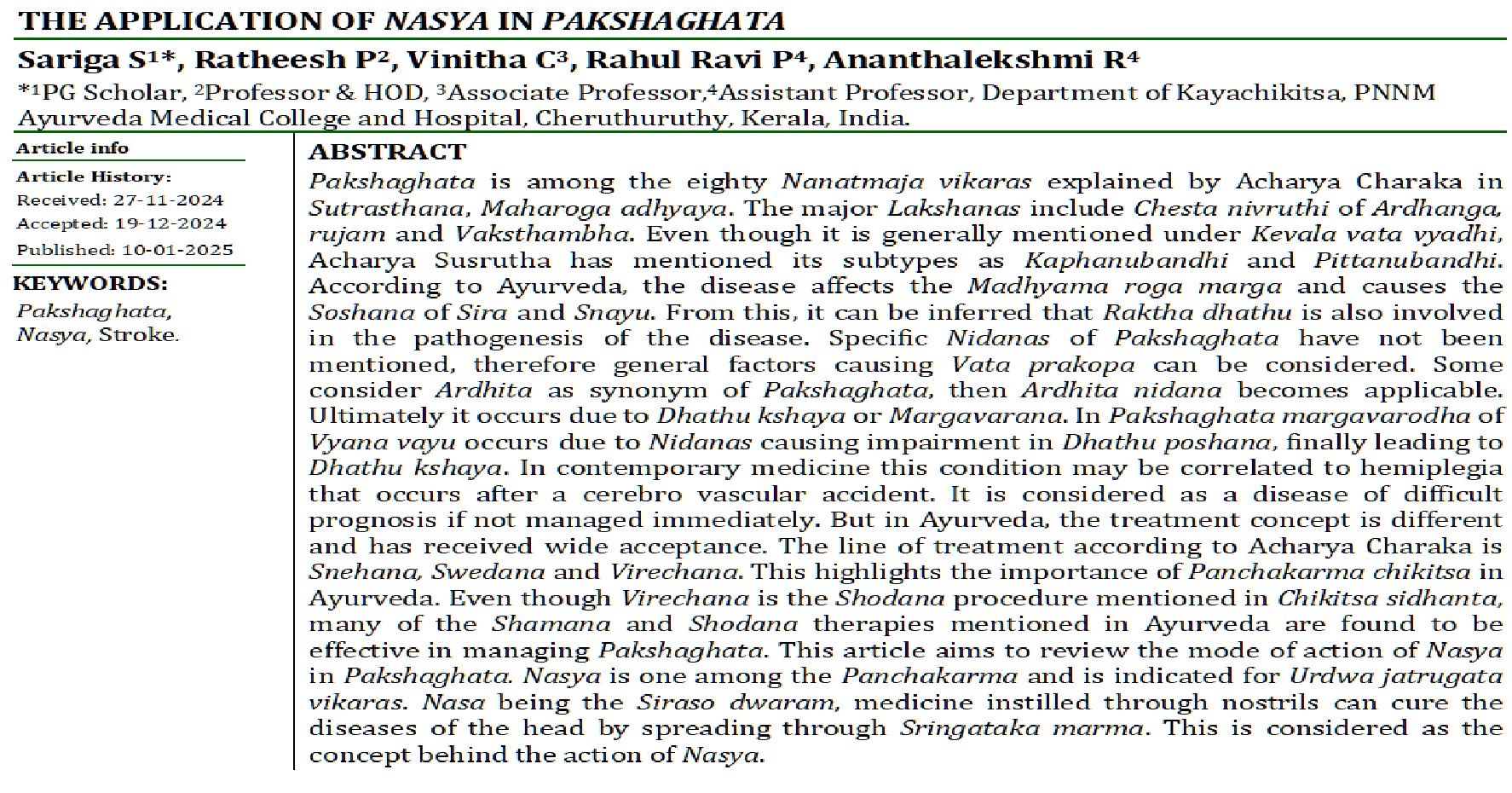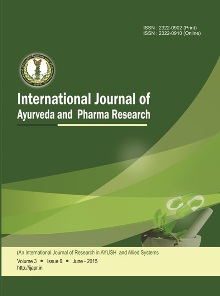The Application of Nasya in Pakshaghata
Abstract
Pakshaghata is among the eighty Nanatmaja vikara explained by Acharya Charaka in Sutrasthana, Maharoga adhyaya. The major Lakshanas include Chesta nivruthi of Ardhanga, rujam and Vaksthambha. Even though it is generally mentioned under Kevala vata vyadhi, Acharya Susrutha has mentioned its subtypes as Kaphanubandhi and Pittanubandhi. According to Ayurveda, the disease affects the Madhyama roga marga and causes the Soshana of Sira and Snayu. From this, it can be inferred that Raktha dhathu is also involved in the pathogenesis of the disease. Specific Nidanas of Pakshaghata have not been mentioned, therefore general factors causing Vata prakopa can be considered. Some consider Ardhita as synonym of Pakshaghata, then Ardhita nidana becomes applicable. Ultimately it occurs due to Dhathu kshaya or Margavarana. In Pakshaghata margavarodha of Vyana vayu occurs due to Nidanas causing impairment in Dhathu poshana, finally leading to Dhathu kshaya. In modern medicine this condition may be correlated to hemiplegia that occurs after a cerebro vascular accident. It is considered as a disease of difficult prognosis if not managed immediately. But in Ayurveda, the treatment concept is different and has received wide acceptance. The line of treatment according to Acharya Charaka is Snehana, Swedana and Virechana. This highlights the importance of Panchakarma chikitsa in Ayurveda. Even though Virechana is the Shodana procedure mentioned in Chikitsa sidhanta, all the Shamana and Shodana therapies mentioned in Ayurveda are found to be effective in managing Pakshaghata. This article aims to review the mode of action of Nasya in Pakshaghata. Nasya is one among the Panchakarma and is indicated for Urdwa jatrugata vikaras. Nasa being the Siraso dwaram, medicine instilled through nostrils can cure the diseases of the head by spreading through Sringataka marma. This is considered as the concept behind the action of Nasya.
Downloads

Copyright (c) 2025 International Journal of Ayurveda and Pharma Research

This work is licensed under a Creative Commons Attribution-NonCommercial-ShareAlike 4.0 International License.






